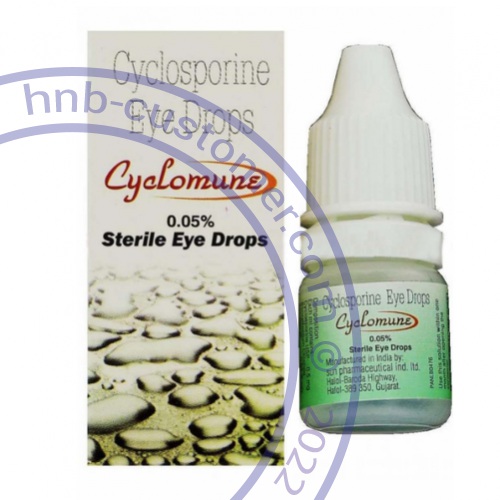Generic Restasis


Cyclosporine is an immunosuppressant. Cyclosporine ophthalmic (for use in the eye) can increase tear production that has been reduced by inflammation in the eye(s). Cyclosporine ophthalmic is used to treat chronic dry eye that may be caused by inflammation.
Cyclosporine eye drops
What is cyclosporine ophthalmic?
Cyclosporine is an immunosuppressant. Cyclosporine ophthalmic (for use in the eye) can increase tear production that has been reduced by inflammation in the eye(s).
Cyclosporine ophthalmic is used to treat chronic dry eye that may be caused by inflammation.
Cyclosporine ophthalmic may also be used for purposes not listed in this medication guide.
Important Information
Follow all directions on your medicine label and package. Tell each of your healthcare providers about all your medical conditions, allergies, and all medicines you use.
Before taking this medicine
You should not use cyclosporine ophthalmic if you are allergic to cyclosporine.
It is not known whether this medicine will harm an unborn baby. Tell your doctor if you are pregnant or plan to become pregnant.
It is not known whether cyclosporine ophthalmic passes into breast milk or if it could harm a nursing baby. Tell your doctor if you are breast-feeding a baby.
Cyclosporine ophthalmic is not approved for use by anyone younger than 16 years old.
How should I use cyclosporine ophthalmic?
Follow all directions on your prescription label. Do not use this medicine in larger or smaller amounts or for longer than recommended.
The usual dose of this medicine is 1 drop in each eye twice daily. Use the medicine about every 12 hours.
Read all patient information, medication guides, and instruction sheets provided to you. Ask your doctor or pharmacist if you have any questions.
Wash your hands before using the eye drops.
To apply the eye drops:
- Turn the bottle upside down a few times to gently mix the medicine. The eye drops should appear white in color.
- Tilt your head back slightly and pull down your lower eyelid to create a small pocket. Hold the dropper above the eye with the tip down. Look up and away from the dropper and squeeze out a drop.
- Close your eyes for 2 or 3 minutes with your head tipped down, without blinking or squinting. Gently press your finger to the inside corner of the eye for about 1 minute, to keep the liquid from draining into your tear duct.
- Wait at least 15 minutes before using artificial tears, or any other eye drops your doctor has prescribed.
Do not touch the tip of the eye dropper or place it directly on your eye. A contaminated dropper can infect your eye, which could lead to serious vision problems.
Do not use the eye drops if the liquid has changed colors or has particles in it. Call your pharmacist for new medicine.
Each single-use bottle of this medicine is for one use only (in one or both eyes). Throw away the bottle after one use, even if there is still some medicine left in it.
Store at room temperature away from moisture and heat. Do not freeze. Keep the bottle tightly closed when not in use.
What happens if I miss a dose?
Apply the missed dose as soon as you remember. Skip the missed dose if it is almost time for your next dose. Do not use extra medicine to make up the missed dose.
What should I avoid while using cyclosporine ophthalmic?
You should not put cyclosporine ophthalmic in your eyes while wearing contact lenses. Wait at least 15 minutes after using this medicine before putting in your contact lenses. It may be best not to wear contact lenses if you have dry eyes. Talk with your doctor.
Cyclosporine ophthalmic side effects
Get emergency medical help if you have signs of an allergic reaction: hives; difficult breathing; swelling of your face, lips, tongue, or throat.
Stop using cyclosporine ophthalmic and call your doctor at once if you have:
- eye pain; or
- eye swelling, redness, severe discomfort, crusting or drainage (may be signs of infection).
Common side effects may include:
- mild burning or stinging in the eyes;
- mild redness or itching;
- blurred vision; or
- feeling like something is in your eye.




